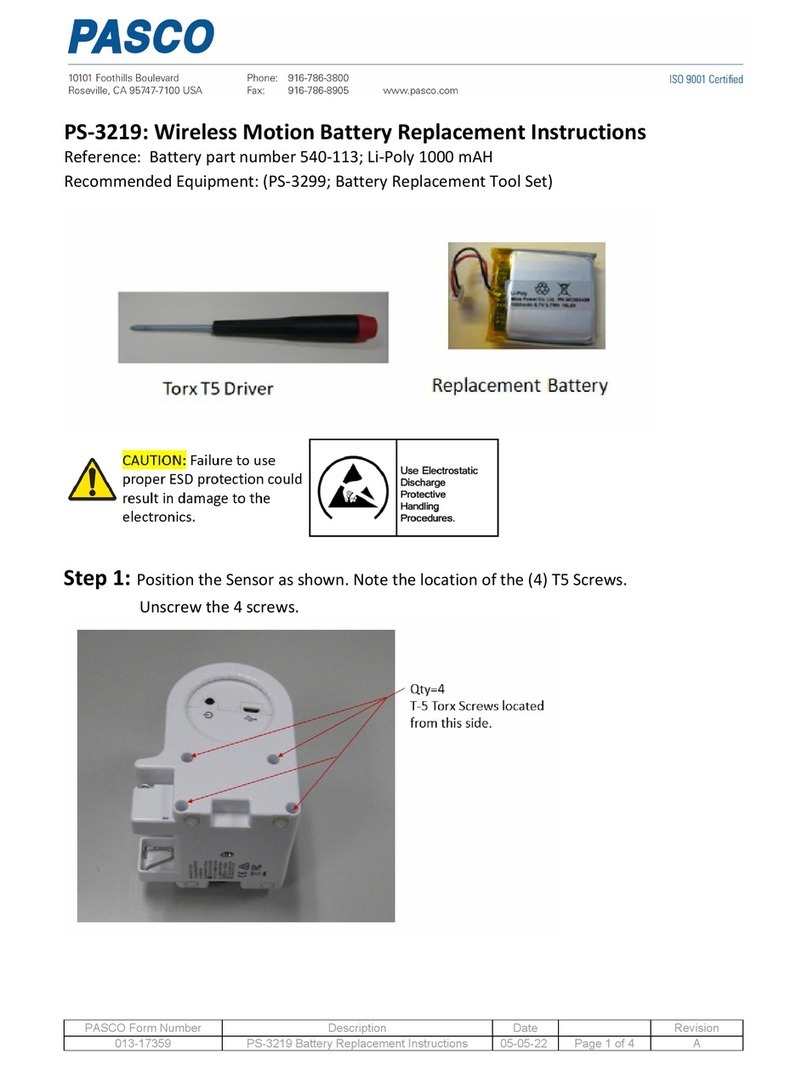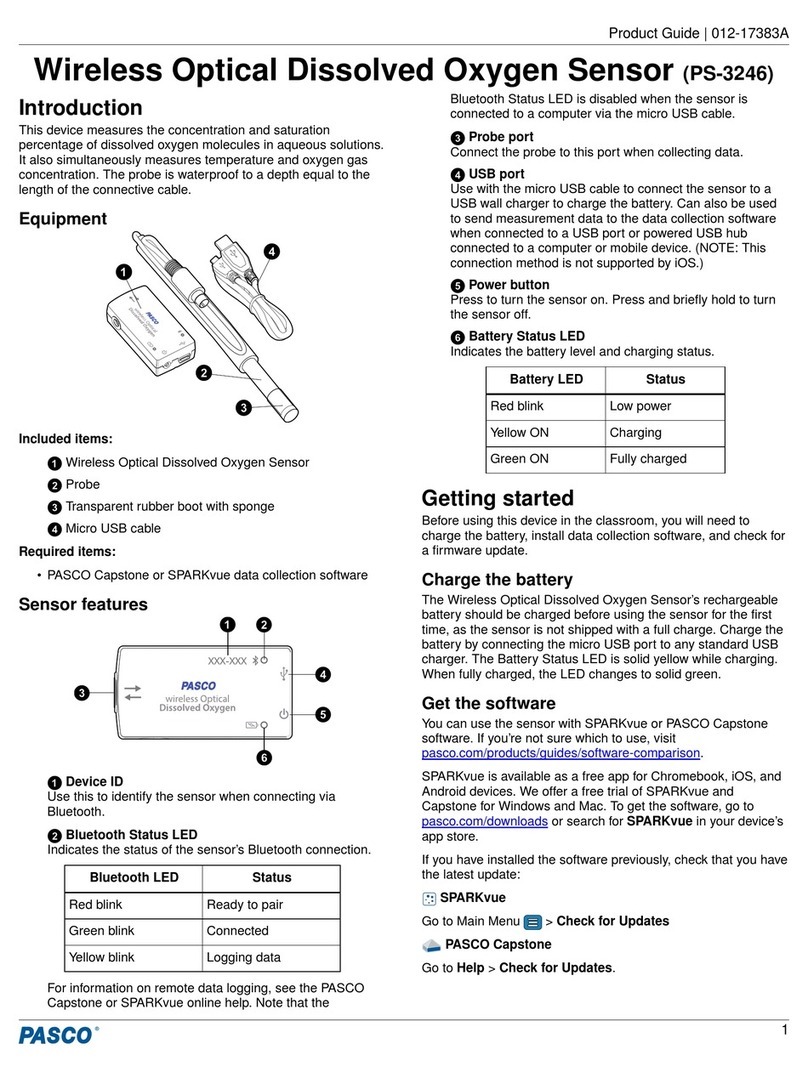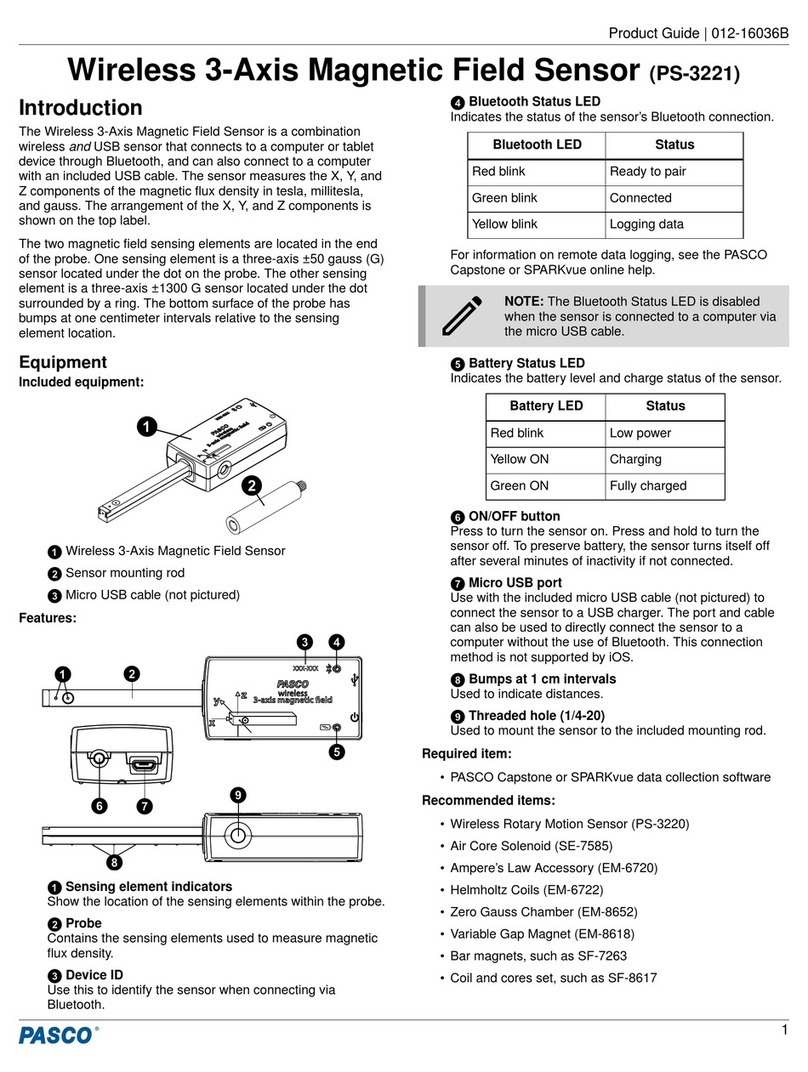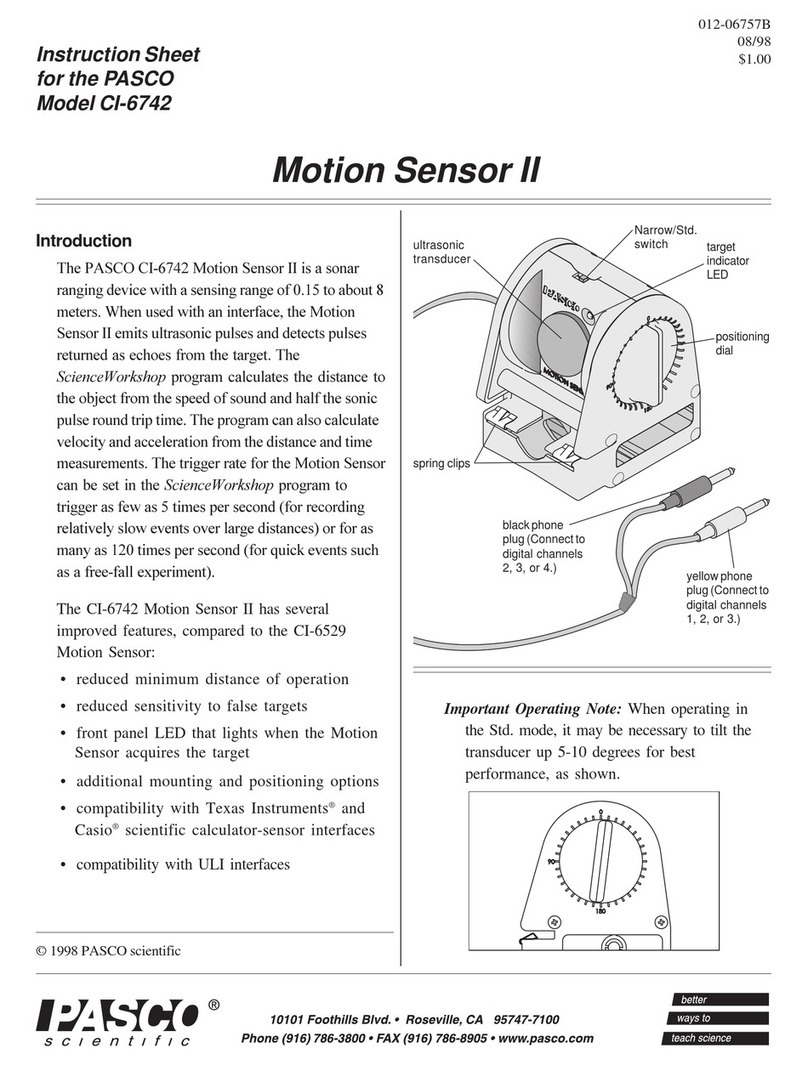
Software Help
See the SPARKvue Help or PASCO Capstone Help for
information about collecting, displaying, and analyzing data.
•In SPARKvue, select the HELP button ( ) in any screen,
including the Home Screen.
•In PASCO Capstone, select PASCO Capstone Help from
the Help Menu, or press F1.
Sample Experiment
1. Mix approximately half a teaspoon of baker’s yeast and one
teaspoon of a simple sugar (such as glucose or lactose)
into 100 mL of lukewarm (about 42°C) water.
2. Place the end of the probe just above the liquid.
3. Start data recording.
4. Observe the reading for about 45 minutes as the ethanol
concentration increases.
Repeat these steps at different temperatures, and with different
amounts and types of sugar and yeast. Note how these factors
affect the rate of ethanol formation.
Specifications and accessories
Visit the product page at pasco.com/product/PS-2194 to view
the specifications and explore accessories. You can also
download experiment files and support documents from the
product page.
Experiment files
Download one of several student-ready activities from the
PASCO Experiment Library. Experiments include editable
student handouts and teacher notes. Visit
pasco.com/freelabs/PS-2194.
Technical Support
Need more help? Our knowledgeable and friendly Technical
Support staff is ready to answer your questions or walk you
through any issues.
Chat pasco.com
Phone 1-800-772-8700 x1004 (USA)
+1 916 462 8384 (outside USA)
Email support@pasco.com
Replacement Parts
Replacement parts may be available for this product. Contact
Technical Support about replacement parts.
•Replacement probe (contact Tech Support)
•Additional PTFE tape (contact Tech Support)
For more information about the Ethanol Sensor, and the latest
revision of this Instruction Sheet, visit the PASCO website at
www.pasco.com/manuals and enter the product name or product
number (PS-2194) in the Search text window.
Limited Warranty
For a description of the product warranty, see the Warranty and Returns page at
www.pasco.com/legal.
Copyright
This document is copyrighted with all rights reserved. Permission is granted to non-
profit educational institutions for reproduction of any part of this manual, providing
the reproductions are used only in their laboratories and classrooms, and are not
sold for profit. Reproduction under any other circumstances, without the written
consent of PASCO scientific, is prohibited.
Trademarks
PASCO and PASCO scientific are trademarks or registered trademarks of PASCO
scientific, in the United States and in other countries. All other brands, products, or
service names are or may be trademarks or service marks of, and are used to
identify, products or services of, their respective owners. For more information visit
www.pasco.com/legal.
Product end-of-life disposal
This electronic product is subject to disposal and recycling regulations
that vary by country and region.
It is your responsibility to recycle your electronic equipment per your
local environmental laws and regulations to ensure that it will be
recycled in a manner that protects human health and the environment.
To find out where you can drop off your waste equipment for recycling, please
contact your local waste recycle or disposal service, or the place where you
purchased the product.
The European Union WEEE (Waste Electronic and Electrical Equipment) symbol
on the product or its packaging indicates that this product must not be disposed of
in a standard waste container.
CE statement
This device has been tested and found to comply with the essential requirements
and other relevant provisions of the applicable EU Directives.
FCC statement
This device complies with part 15 of the FCC Rules.
Operation is subject to the following two conditions:
(1) This device may not cause harmful interference, and (2) this device must accept
any interference received, including interference that may cause undesired
operation.
Product Guide | 012-10287D
3
























